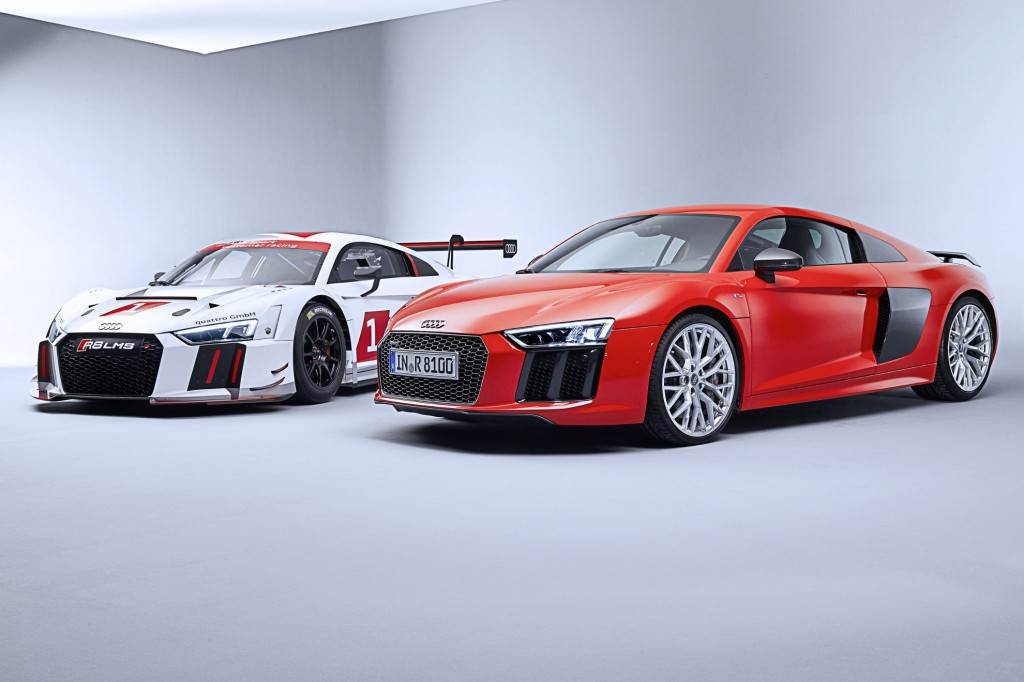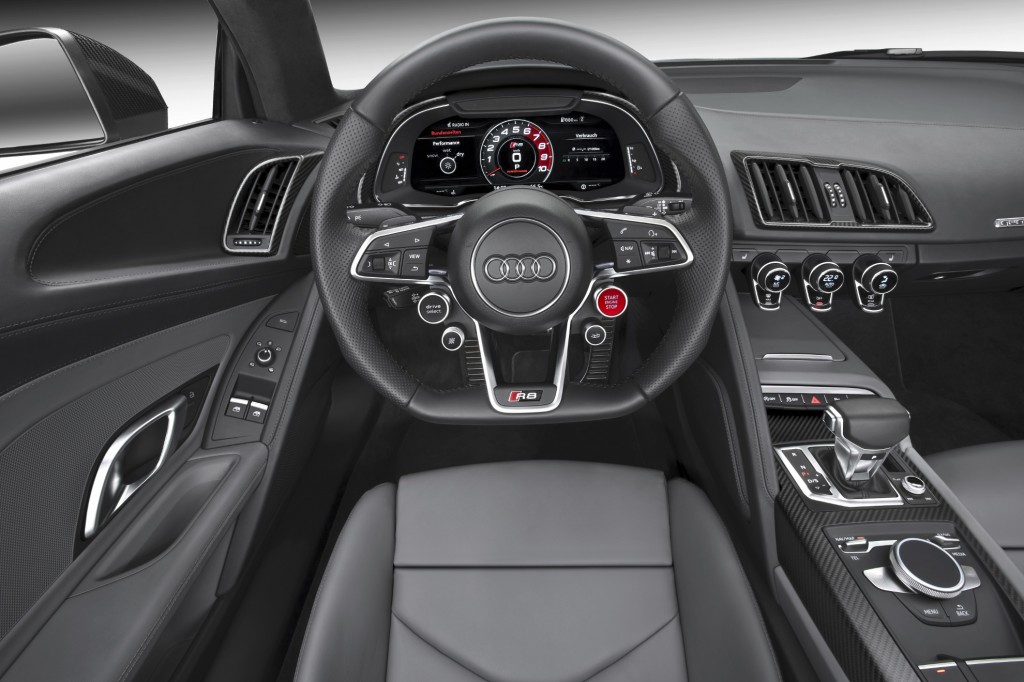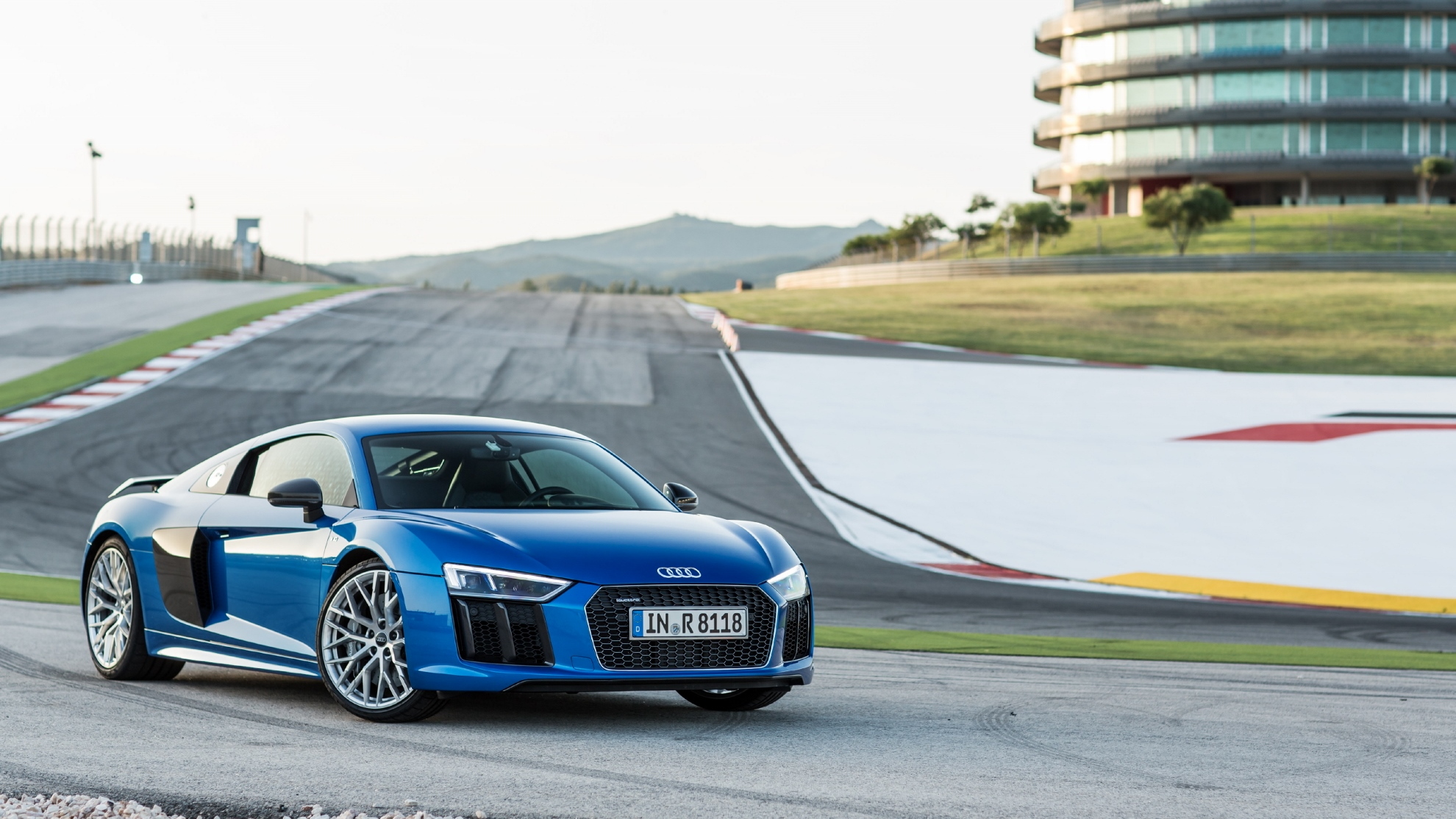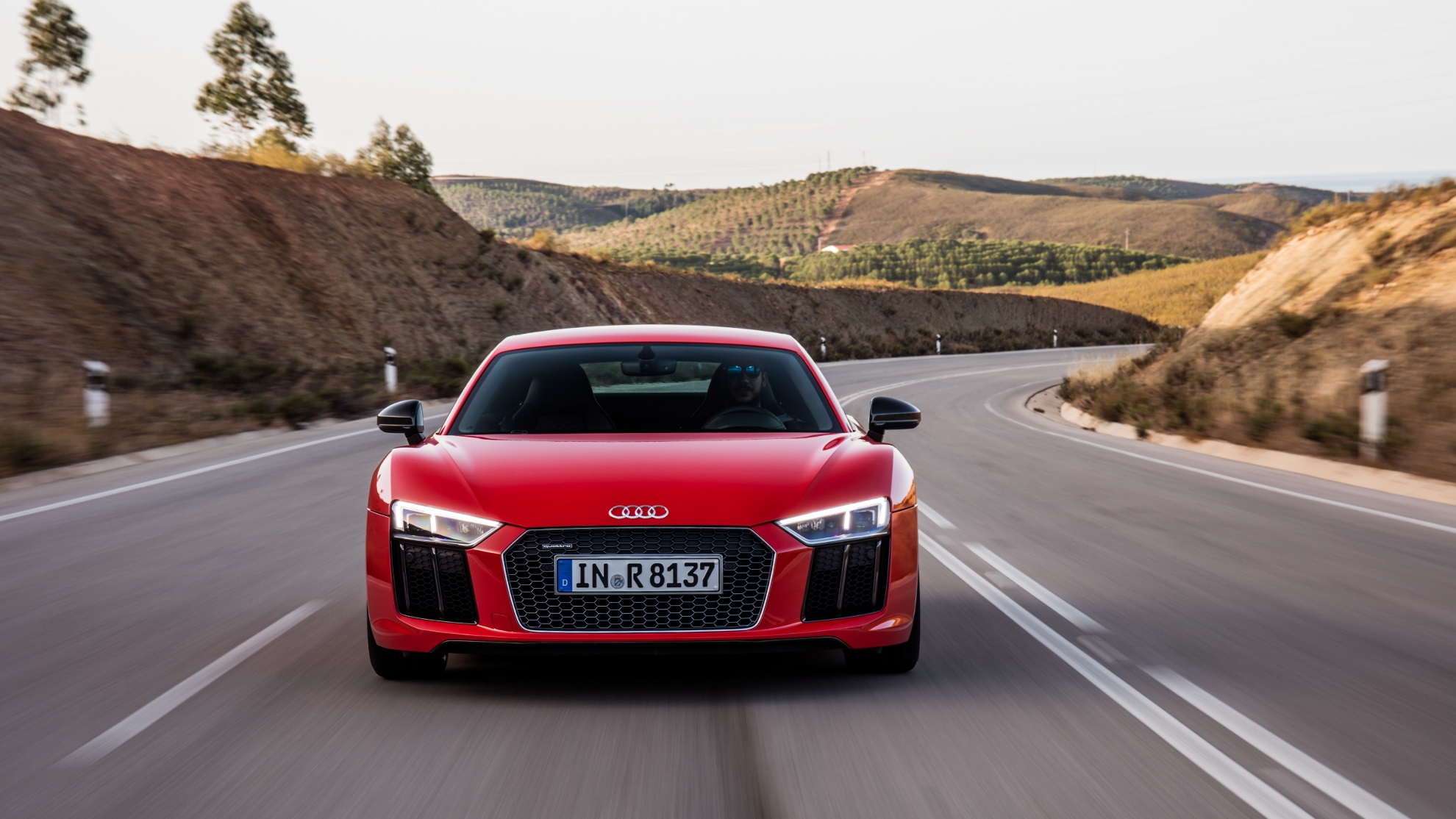“The R8 is born at Le Mans.” So said “Mr. Le Mans,” now-retired race driver and nine-time 24 Hours of Le Mans winner Tom Kristensen in a promotional video that Audi showed at the press drive for the 2017 R8 supercar. Even though the video felt like a combination of a Folgers commercial and an online dating profile, Kristensen is right. Starting in 2000 Audi competed at and won the 24 Hours of Le Mans in the R8 Prototype racer, taking the checkered flag at that prestigious race five times in its first six tries.
The R8 production car followed in 2008 as Audi’s first supercar, and it, too, had a racing pedigree. It was developed alongside the R8 LMS race car that competed in the FIA’s GT3 series, bringing the fruits of Audi’s racing heritage to the street.
MUST WATCH: LaFerrari Nearly Powerslides Right Into Oncoming Traffic: Video
The 2017 R8, which goes on sale in the United States next spring, takes a similar approach. Engineering teams working in tandem developed it alongside the R8 LMS race car that made its debut in May with a victory at the Nürburgring 24 Hours. The road car and the race car share 50 percent of their parts, giving customer cars a basis in some pretty advanced engineering.
The second-generation R8 is built on the Modular Sportscar System (MSS) aluminum spaceframe that also underpins the Huracán from corporate partner Lamborghini. Made up of more than 80 percent aluminum, MSS also uses carbon fiber to provide extra rigidity to the firewall and central tunnel. The structure is about 70 pounds lighter than that of the outgoing R8, contributing to an overall weight loss of roughly 110 pounds. It also boasts 40 percent more torsional stiffness, thanks in part to a pair of X braces, one on top of the midship-mounted engine and one behind it.
Audi engineers also improved the power of the 5.2-liter V-10 engine while increasing fuel economy by 13 percent. They added port injection to go with the already existing direct injection. This provides better emissions at startup and allows the computer to choose which type of injection works best for the throttle demands.

2017 Audi R8

2017 Audi R8

New Audi R8 LMS race car wins 2015 ADAC Zurich Nürburgring 24 Hours
Cylinder deactivation is the main reason for the fuel savings. It makes the V-10 capable of running as a five-cylinder under light engine loads. This unique system can use either cylinder bank to power the car, and when the deactivated bank dips below optimal operating temperature, the system can switch banks. In addition, a new sailing feature eliminates engine braking during low-speed cruising when the Audi Drive Select system is in Comfort mode.
DON'T MISS: This Mysterious Truck Has Ferrari's Five Flagship Supercars Tucked Away: Video
New software tuning and a bump in compression from 12.5:1 to 12.7:1 help to increase horsepower from 525 to 540 and torque from 391 to 398 pound-feet in the base V10 model. In the V10 Plus, horsepower and torque jump from 550 and 398 to 610 and 413, respectively. At launch, the V-10 will be the only engine. The 4.2-liter V-8 is gone. We suspect it will be replaced by either Audi’s twin-turbo 4.0-liter V-8 or by an even smaller force-fed engine later in the life cycle.
Motor Authority had the opportunity to test the 2017 Audi R8 V10 Plus at the Algarve International Circuit in Portimao, Portugal, to judge for ourselves the results of the improvements Audi has made to its race-bred second-generation R8. Suffice it to say, the changes were for the better, well most of them, anyway.
Power in abundance
The V-10 fires up with a whumm, and most of its soundtrack is variations on that sound. It just gets higher pitched as revs increase, and it pops and crackles when you let off the throttle. In this day and age of turbocharged and supercharged supercars, the R8’s sound is pure and appropriately macho.
The power, however, is far more macho. The V-10 delivers gobs of willing thrust. Without forced induction, there is usually no swell of power that knocks you back in your seat. Instead, power delivery is linear and relentless, building to a top speed of 205 mph for the V10 Plus and 199 mph for the V10 model.
CHECK OUT: America’s Renntech Builds World’s First 10-Second Mercedes-AMG GT: Video
Use the Launch Control feature and the power becomes downright violent. It’s simple, too. Tap the Performance mode button (the little checkered flag) on the steering wheel so it shuts off traction control, hit the brake with your left foot, stomp on the throttle, and let go of the brake. The car then slingshots forward, seemingly accelerating faster when it hits second gear than upon its initial launch. The power just keeps coming as the car vaults from 0 to 100 kph in just 3.2 seconds (likely 3.1 seconds for the 0 to 60 mph run). With standard quattro all-wheel drive, you don’t need to be a skilled driver to achieve those times. They are repeatable over and over again.
Audi makes only one transmission available for the new R8, which is both good news and bad. Unfortunately, the six-speed manual is gone and with it goes the beautiful piece of jewelry that was its gated metal shifter. That leaves just Audi’s S Tronic dual-clutch gearbox. It’s a modern, fast-acting transmission that Audi charges a ludicrous $9,100 for on the current model, and it is certain to add a hefty sum to the base price of the 2017 model when it comes out next spring.

2017 Audi R8

2017 Audi R8

2017 Audi R8
Road and track performance
Journalists have written a lot about how cars like the Huracán and McLaren 650S are easy to live with on an everyday basis, but the 2017 R8 has the most bandwidth of that group. It has low-slung supercar looks, but is a surprisingly comfortable cruiser with the Drive Mode Select system in the Comfort or Auto modes. Drivers can choose how raucous things get from there. An Individual mode has comfort, auto, and dynamic and settings for the steering, engine, and dampers. Opting for the Dynamic mode pins all those choices to the dynamic settings, and a Performance mode goes even further. It shuts off the traction control, and lets drivers optimize the systems for best traction in Wet, Dry or Snow conditions.
ALSO SEE: Yes, The Grand Cherokee Trackhawk Is Coming; No, This Isn't It
Tool around in Comfort or Auto and the R8 is downright pliant, soaking up bumps more like an A4 than a supercar and executing relaxed shifts of the S Tronic. Opt for Dynamic mode and the ride gets firmer but is still fairly supple, and the steering adds heft but is still too light for our tastes, lacking the weight and therefore stability we would like during high-speed cornering.
That’s all quite easy to live with, but Dynamic mode also brings out the engine and transmission’s inner Tasmanian Devil. It holds lower gears longer, keeping the engine on boil and making throttle response immediate. It’s great for executing a quick passing maneuver but is no way to drive around town sipping a latte.
Latte-sippers won’t take the R8 to the racetrack, but they’ll be happy to know that it’s a very capable track machine. We got seven trips around the Algarve Circuit in V10 Plus models equipped with the available dynamic steering and magnetic ride suspension systems and 20-inch tires, and came away impressed by two traits in particular. First, turn-in is immediate, and second, the Pirelli P Zero tires grip relentlessly in corners.
But there’s more going on here than that. Handling is very neutral, which is a welcome change from the programmed understeer the last-generation model exhibited. Drive the car too hard into a car and it will still understeer, but even though the R8 uses the quattro all-wheel-drive system, it can also act like a rear-drive car. Kick the throttle mid-turn and the tail jumps out. However, the updated quattro system can then help out. The front differential can now handle all of the car’s power, while the last version could only accept about a third of it. That allows quattro to send more power to the front wheels to help you drive out of the slide.
DON'T MISS: Ferrari FXX K, FXX And 599XX Rev Battle Is V-12 Gold: Video
The V10 Plus also comes standard with carbon ceramic brakes with 15-inch discs and fixed six-piston calipers up front and 14-inch discs with four-piston fixed calipers in the rear. These massive plates provide stopping power that is so immediate that drivers will have to learn to go easy on the brake pedal during street driving. On the track, they shrugged off six hours of constant driving without warping or fading.

2017 Audi R8

2017 Audi R8

2017 Audi R8
Comfortable but compromised cockpit
The R8’s cabin is small but comfortable. The driver sits more upright than in most supercars, and that aids visibility to the front. Rear vision, especially to the sides, is obstructed by the slope of the slick coupe body. The V10 Plus model comes with lightweight race bucket seats with fixed seatbacks. Thinner than the available sport seats, these seats provide a bit more legroom for tall drivers but we prefer the moving backs and extra adjustments of the sport seats, which also include power bolsters that can be set to accommodate U.S.-sized rumps.
WATCH: Here’s 10 Things You May Not Have Known About Pagani--From A Huayra Owner
While the occupants are comfortable, the cabin is also painfully short of small items storage, and the front trunk is just big enough for a pair of overnight bags.
But space for people and their gadgets aren’t important to supercar buyers. Looks and performance are, and on those two fronts the 2017 R8 delivers. It can reach 60 mph in just over three seconds, accelerate to a top speed of 205 mph, and dice up a race track with the best of them. It’s also incredibly comfortable on the street, allowing buyers to have their cake and eat it on a daily basis, too. Only a company with the racing heritage and luxury car expertise of Audi could deliver such a winning combination.
_______________________________________






